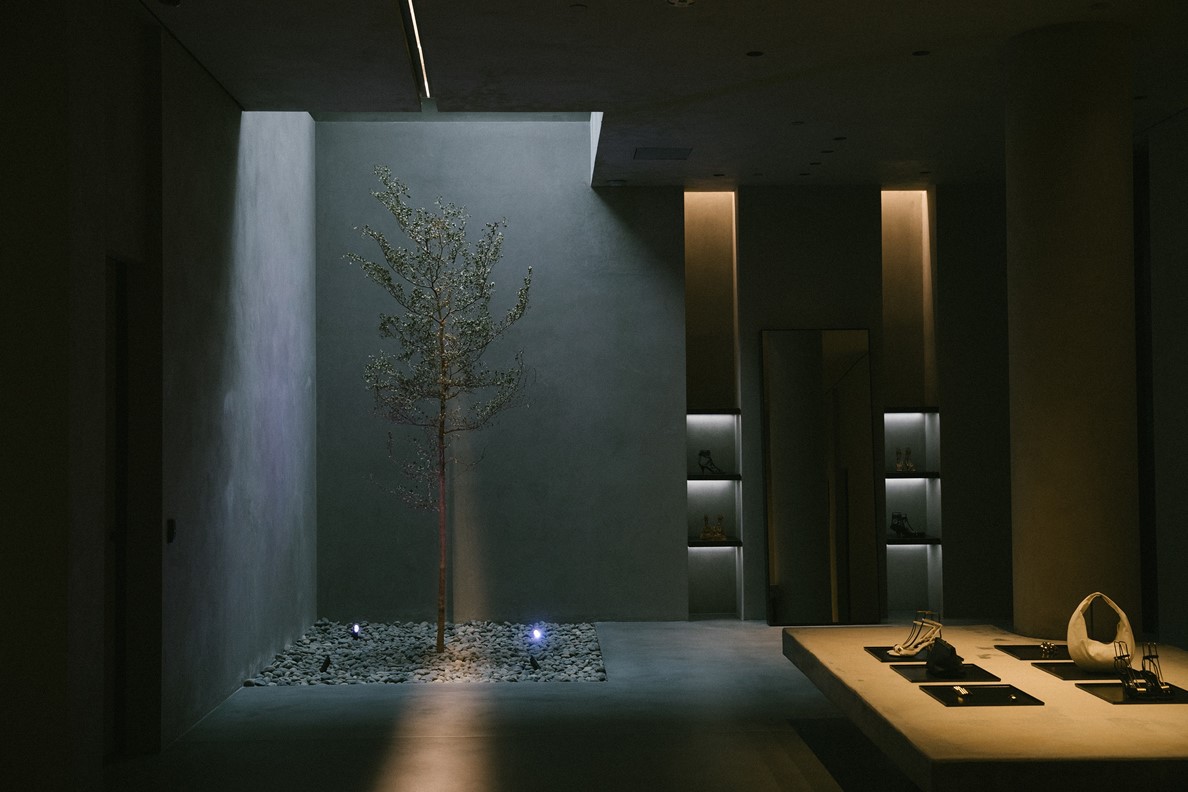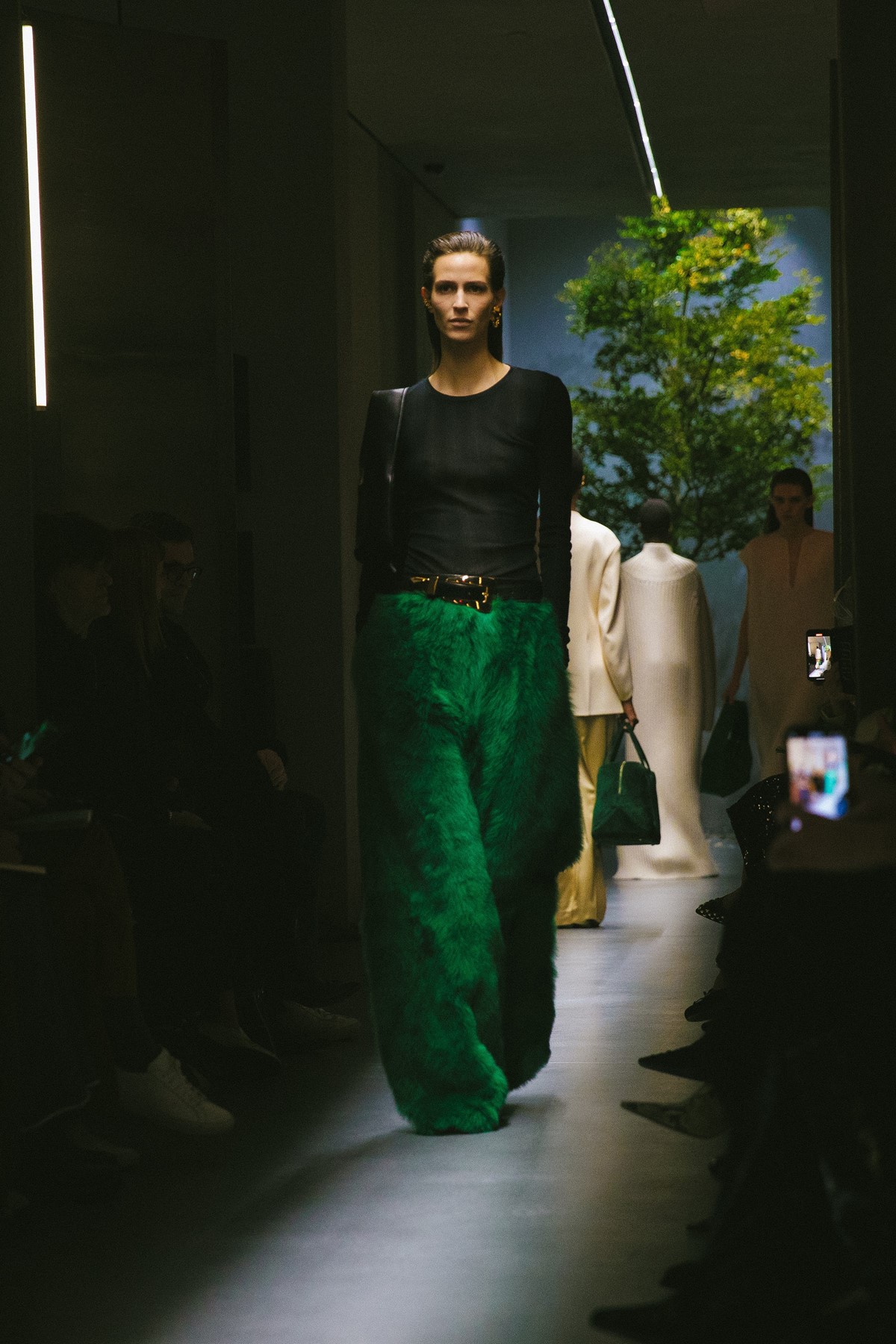There is a certain look that a certain type of
person strives to achieve when getting dressed: composed, distinct — no one
else is wearing this outfit — without trying too hard.
اضافة اعلان
She may be wearing something just edgy enough to catch eyes
but not turn heads. The style is a kind of camouflage, in that she rarely looks
out of place, never overdressed nor underdressed. There are endless
interpretations of this aesthetic and endlessly subjective words used to
describe it, like “chic”, “effortless”, or “put together”.
But lately, the reigning phrase used to describe this look —
often deployed by marketers and media — is “cool girl”. And in American fashion
right now, the label most often associated with “cool girl” is Khaite.
This is, in some ways, a mystery to Catherine Holstein, who
founded the brand in 2016. But that is the cool girl way; a true cool girl
would never describe herself as such.
The idea was primal for Holstein: to make clothes that could last forever, she said, like the ones in her mother’s closet, and that could “make you better understand yourself”.
“First of all, you’re asking the most self-loathing person;
I’ll find something wrong with everything,” said Holstein, 38, who in November
was named womenswear designer of the year by the Council of Fashion Designers
of America, an award for which she had genuinely prepared no acceptance speech.
“The ‘cool girl’ thing I don’t agree with so much,” she
said. “It’s a very youthful term. I won’t say it’s bad, but I think we have a
lot more range than that.” (Khaite’s average customer, according to its data,
is between 25 and 34.)
Holstein hopes this narrative will change, she said, with
the company’s next phase: opening its own stores and that way gaining some
control over the environment in which the line is presented. Khaite is carried
by about 270 stores or websites globally, where its top sellers tend to be
leggy jeans, sexy-ish knitwear, or heeled boots and tote bags in rich,
high-quality leather. Emphasis on rich. Other than denim, which starts around
$420, prices for a piece of Khaite’s clothing typically exceed $1,000.
 A skylight at the
back of the Khaite store on Mercer Street in New York illuminates a Bucida
buceras tree, known commonly as a black olive or Shady Lady tree.
A skylight at the
back of the Khaite store on Mercer Street in New York illuminates a Bucida
buceras tree, known commonly as a black olive or Shady Lady tree.
Its first store, which opened in SoHo in February, is an
austere space punctuated by curved steel structures, a la Richard Serra. It is
mostly gray, except for large carpeted dressing rooms in Stanley Kubrick red —
“the right kind of red, not too orange, not too burgundy”, said Griffin Frazen,
the architect, who is also newly married to Holstein.
The store aims to capture the same qualities of Khaite’s
clothing: sleek, self-assured, a little gothic-romantic. And, despite
Holstein’s protests, cool.
Building a mystery
Holstein was drawn to fashion from a young age, when she
would copy fashion sketching templates belonging to her older sister. She
dressed boyishly as a child, emulating her brothers, yet “had infatuations with
really feminine girls in my class, who dressed really frilly”.
As she got older, she would steal luxury designer pieces
from her mother’s wardrobe and gradually acquired her own: a Dior bag for
graduation, a beloved Nicolas Ghesquière-era Balenciaga leather jacket for
Christmas in her 20s. Her father worked in finance, and the family moved from
Connecticut to San Diego to London, where she spent most of her youth, then
back to California just before Holstein finished high school.
She came to New York to attend Parsons, where, during her
junior year, she designed a collection of six sailor dresses. After Teen Vogue
spotted the dresses at events around the city, the magazine brought her in to
show the collection to editors. One editor tipped off Barneys, which placed an
order. Holstein dropped out of school to start her namesake label.
“It was a very privileged place to be in, of course, in
terms of having that access,” she said.
When the recession hit, Holstein closed the business. She
took various jobs in fashion, including stints in top design roles at Gap and
Vera Wang, followed by consulting at J. Crew and the Elder Statesman.
 A look from the
Khaite fall 2023 show at the new Khaite store in New York.
A look from the
Khaite fall 2023 show at the new Khaite store in New York.
But on the cusp of 30, Holstein began to feel discouraged,
as if she had missed her chance to move to Paris and work in a more traditional
luxury environment. Then, she said, a friend intervened, telling her over
dinner that he believed she could run her own company again. That friend was
Charlie de Viel Castel, one of Khaite’s early investors, who is now married to
Khaite’s longtime style director Vanessa Traina.
From there, and with capital from the group Assembled
Brands, Khaite was born. The idea was primal for Holstein: to make clothes that
could last forever, she said, like the ones in her mother’s closet, and that
could “make you better understand yourself”. She saw fashion as an “identity
builder”.
The word that comes to mind is “nonchalance”. The Khaite woman “cares but doesn’t care too, too much”.
Not that she is particularly comfortable sharing her own
identity with the world. Many designers link their personas with their brands,
acting not only as creative director or chief executive but as physical
embodiment. But Holstein has shied away from being the public face. She hopes
to replace herself as chief executive this year to focus more on being the
creative director.
Her reticence comes largely from that self-loathing she
mentioned. Holstein talks quite openly about living with insecurity. Even the
idea of having hair and makeup done for the CFDA Awards seemed to her
embarrassingly fussy. She was expecting to lose anyway.
Yet she also recognizes that privacy can beget mystery — a
commodity in an industry that breeds extroverts.
“Some of the best fashion designers, like Phoebe Philo or
Hedi Slimane, are notoriously private,” Holstein said. “I can only speak for
myself, but you want to make sure that the clothes have their own platform, and
that it’s not too much about you. Even though it so is.”
Street styleThere is an obvious irony in Holstein, who is so forthcoming
about her own shame, producing clothing so associated with confidence.
For Alison Loehnis, the interim chief executive of Yoox
Net-a-Porter group, which has sold Khaite merchandise since 2017 — and said it
is one of Net-a-Porter’s fastest-growing brands in its categories and price
point — the word that comes to mind is “nonchalance”. The Khaite woman “cares
but doesn’t care too, too much”.
 Crystal variations
of the Khaite large Olivia bag (priced at $4,800) and Davis boots ($12,000) at
the new Khaite store in New York.
Crystal variations
of the Khaite large Olivia bag (priced at $4,800) and Davis boots ($12,000) at
the new Khaite store in New York.
It is that “cool-girl factor”, she said. “A woman who is
comfortable in her own skin, who walks in the door, head held high, curious.”
One of Khaite’s most familiar images is a viral paparazzi photo of Katie Holmes
hailing a taxi in a matching cashmere bra and cardigan, which falls casually
off one shoulder.
Yet there is a reason people more often describe the
feelings Khaite evokes, rather than the actual fashion. The design is not
necessarily groundbreaking; the clothes are “stealth”, as Holstein has said.
Unlike other designers, her priority, and that of her creative partner, Traina,
is not to make women look as beautiful as possible, as if they are living in a
fashion fantasy.
“When you look at the board, I could imagine sitting in a restaurant, or seeing any one of those looks walk down the street on the woman, and feeling immediately drawn to her.”
Their woman must exist in reality (at least a reality where
she can both afford the prices and fit into the size range). “Is this character
believable?” Traina emphasized while fitting models ahead of a show.
“When you look at the board,” she continued, gesturing at a
big white plank jabbed with photos of each outfit in progress, “I could imagine
sitting in a restaurant, or seeing any one of those looks walk down the street
on the woman, and feeling immediately drawn to her.”
One of those looks, as presented at Khaite’s runway show,
was an oversize blazer worn over a long sheer chiffon skirt — streamlined and
stiff on top, swishy on the bottom.
“You could be that person,” Traina said.
“It’s achievable,” Holstein added. “When it’s such a fantasy
that you can’t see yourself in it, then is it really that desirable?”





